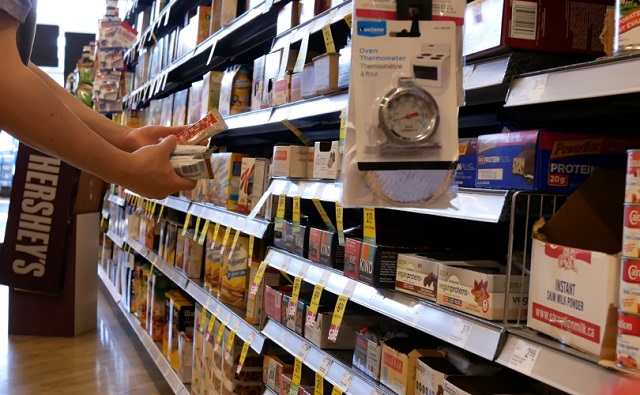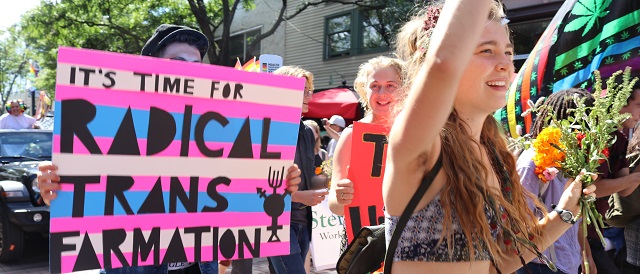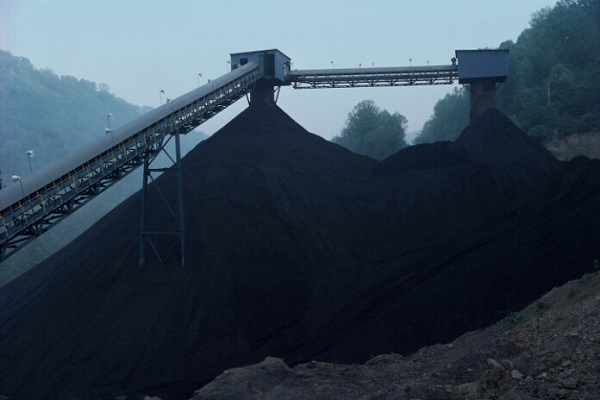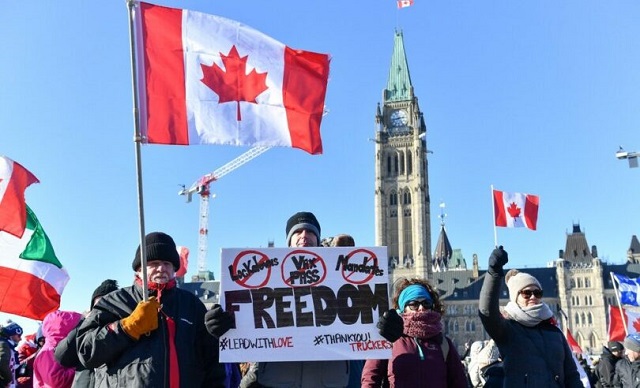Economy
High food costs causing some Canadians to feel ‘hopeless’ and ‘desperate’: gov’t report

From LifeSiteNews
The Department of Social Development stated in a recent briefing note that the nation’s poverty rate could increase by 14% this year due to high food prices.
The Canadian government’s own National Advisory Council on Poverty (NACP) observed in a recent update to the nation’s Parliament that fast-rising food costs in Canada have led to many people feeling a sense of “hopelessness and desperation” with nowhere to turn for help.
As noted by Blacklock’s Reporter, NACP stated last week in a report to Parliament that its coming 2024 spring figures regarding the poverty rate in Canada show it standing at 9.8%, affecting some four million Canadians, compared with a low of 6.4 in 2020.
“We noted a growing sense of hopelessness and desperation,” the NACP said in its report titled Blueprint for Transformation.
NACP observed how persons with lived “expertise of poverty and service providers alike told us things seem worse now than they were before and during the first years of the pandemic.”
“We heard that people are worried about the rising cost of living and inflation,” the report added.
According to the NACP report, more people are in “crisis and these crises are more visible in our communities.”
NACP said that recent increases in cost of living “represent one of the most important socioeconomic challenges faced by people living in Canada following the onset of the Covid-19 pandemic.”
High living costs in Canada will “put upward pressure on poverty rates,” the NACP said.
NACP observed that in speaking with people, it seems as “though the feelings of hopefulness and optimism for change that we saw early in the pandemic have faded.”
“Hopelessness and desperation have replaced these as the cost of living continues to increase,” NACP documented.
Food costs are going up so fast that even Canada’s own Department of Social Development in a recent briefing note stated that the nation’s poverty rate could increase by 14% this year due to high food prices.
Under Prime Minister Justin Trudeau, due to excessive COVID money printing, inflation has skyrocketed.
A report from September 5, 2023, by Statistics Canada shows food prices are rising faster than headline inflation at a rate of between 10% and 18% per year.
According to a recent Statistics Canada supermarket survey of prices, Canadians are now paying 12% more for carrots, 14% more for hamburger (ground meat), and some 27% more for baby formula.
“Chronic issues are becoming more acute,” the Council on Poverty wrote. “These include inadequate income, unmet housing needs and houselessness, food insecurity and worsening physical and mental health.”
NACP noted that although poverty rates fell between 2015 and 2020, these declines were not “sustained” and the rates will now “increase even further.”
Trudeau’s carbon tax adds to high inflation and food costs and should be ‘scrapped’
Last year, the Bank of Canada acknowledged that Trudeau’s federal “climate change” programs, which have been deemed “extreme” by some provincial leaders, are indeed helping to fuel inflation.
Franco Terrazzano, federal director of the Canadian Taxpayers Federation, told LifeSiteNews that Trudeau should “completely scrap his carbon tax,” as it is making everything more expensive.
Terrazzano said at the “very least” Trudeau should “extend the same relief he provided to Atlantic Canadians and take the carbon tax off everyone’s home heating bill.”
In October, amid dismal polling numbers that showed his government would be defeated in a landslide by the Conservative Party come the next election, Trudeau announced he was pausing the collection of the carbon tax on home heating oil in Atlantic Canadian provinces for three years.
LifeSiteNews has earlier reported on Trudeau’s carbon tax costing Canadians hundreds of dollars annually, as government rebates it gives out are not enough to compensate for high fuel costs.
A report by four Canadian universities in December showed that an average family of four will spend approximately $16,297 on groceries in 2024.
Automotive
Governments in Canada accelerate EV ‘investments’ as automakers reverse course

From the Fraser Institute
Evidence continues to accrue that many of these “investments,” which are ultimately of course taxpayer funded, are risky ventures indeed.
Even as the much-vaunted electric vehicle (EV) transition slams into stiff headwinds, the Trudeau government and Ontario’s Ford government will pour another $5 billion in subsidies into Honda, which plans to build an EV battery plant and manufacture EVs in Ontario.
This comes on top of a long list of other such “investments” including $15 billion for Stellantis and LG Energy Solution, $13 billion for Volkswagen (with a real cost to Ottawa of $16.3 billion, per the Parliamentary Budget Officer), a combined $4.24 billion (federal/Quebec split) to Northvolt, a Swedish battery maker, and a combined $644 million (federal/Quebec split) to Ford Motor Company to build a cathode manufacturing plant in Quebec.
All this government subsidizing is of course meant to help remake the automobile, with the Trudeau government mandating that 100 per cent of new passenger vehicles and light trucks sold in Canada be zero-emission by 2035. But evidence continues to accrue that many of these “investments,” which are ultimately of course taxpayer funded, are risky ventures indeed.
As the Wall Street Journal notes, Tesla, the biggest EV maker in the United States, has seen its share prices plummet (down 41 per cent this year) as the company struggles to sell its vehicles at the pace of previous years when first-adopters jumped into the EV market. Some would-be EV makers or users are postponing their own EV investments. Ford has killed it’s electric F-150 pickup truck, Hertz is dumping one-third of its fleet of EV rental vehicles, and Swedish EV company Polestar dropped 15 per cent of its global work force while Tesla is cutting 10 per cent of its global staff.
And in the U.S., a much larger potential market for EVs, a recent Gallup poll shows a market turning frosty. The percentage of Americans polled by Gallup who said they’re seriously considering buying an EV has been declining from 12 per cent in 2023 to 9 per cent in 2024. Even more troubling for would-be EV sellers is that only 35 per cent of poll respondents in 2024 said they “might consider” buying an EV in the future. That number is down from 43 per cent in 2023.
Overall, according to Gallup, “less than half of adults, 44 per cent, now say they are either seriously considering or might consider buying an EV in the future, down from 55 per cent in 2023, while the proportion not intending to buy one has increased from 41 per cent to 48 per cent.” In other words, in a future where government wants sellers to only sell EVs, almost half the U.S. public doesn’t want to buy one.
And yet, Canada’s governments are hitting the gas pedal on EVs, putting the hard-earned capital of Canadian taxpayers at significant risk. A smart government would have its finger in the wind and would slow down when faced with road bumps. It might even reset its GPS and change the course of its 2035 EV mandate for vehicles few motorists want to buy.
Author:
Automotive
Red States Sue California and the Biden Administration to Halt Electric Truck Mandates

From Heartland Daily News
By Nick Pope
“California and an unaccountable EPA are trying to transform our national trucking industry and supply chain infrastructure. This effort—coming at a time of heightened inflation and with an already-strained electrical grid—will devastate the trucking and logistics industry, raise prices for customers, and impact untold number of jobs across Nebraska and the country”
Large coalitions of red states are suing regulators in Washington, D.C., and California over rules designed to effectively require increases in electric vehicle (EV) adoption.
Nebraska is leading a 24-state coalition in a lawsuit against the Environmental Protection Agency’s (EPA) recently-finalized emissions standards for heavy-duty vehicles in the U.S. Court of Appeals for the D.C. Circuit, and a 17-state coalition suing the state of California in the U.S. District Court for the Eastern District of California over its Advanced Clean Fleet rules. Both regulations would increase the number of heavy-duty EVs on the road, a development that could cause serious disruptions and cost increases across the U.S. economy, as supply chain and trucking sector experts have previously told the Daily Caller News Foundation.
“California and an unaccountable EPA are trying to transform our national trucking industry and supply chain infrastructure. This effort—coming at a time of heightened inflation and with an already-strained electrical grid—will devastate the trucking and logistics industry, raise prices for customers, and impact untold number of jobs across Nebraska and the country,” Republican Nebraska Attorney General Mike Hilgers said in a statement. “Neither California nor the EPA has the constitutional power to dictate these nationwide rules to Americans. I am proud to lead our efforts to stop these unconstitutional attempts to remake our economy and am grateful to our sister states for joining our coalitions.”
(RELATED: New Analysis Shows Just How Bad Electric Trucks Are For Business)
While specifics vary depending on the type of heavy-duty vehicle, EPA’s emissions standards will effectively mandate that EVs make up 60% of new urban delivery trucks and 25% of long-haul tractors sold by 2032, according to The Wall Street Journal. The agency has also pushed aggressive emissions standards for light- and medium-duty vehicles that will similarly force an increase in EVs’ share of new car sales over the next decade.
California’s Advanced Clean Fleet rules, meanwhile, will require that 100% of trucks sold in the state will be zero-emissions models starting in 2036, according to the California Air Resources Board (CARB). While not federal, the California rules are of importance to other states because there are numerous other states who follow California’s emissions standards, which can be tighter than those required by the EPA and other federal agencies.
Critics fear that this dynamic will effectively enable California to set national policies and nudge manufacturers in the direction of EVs at a greater rate and scale than the Biden administration is pursuing.
Trucking industry and supply chain experts have previously told the DCNF that both regulations threaten to cause serious problems for the country’s supply chains and wider economy given that the technology for electric and zero-emissions trucks is simply not yet ready to be mandated at scale, among other issues.
Neither CARB nor the EPA responded immediately to requests for comment.
Nick Pope is a contributor to The Daily Caller News Service.
Originally published by The Daily Caller. Republished with permission.
-

 Uncategorized2 days ago
Uncategorized2 days agoRCMP recruitment failure has Alberta advocacy group calling for Provincial Police Service
-

 Automotive15 hours ago
Automotive15 hours agoGovernments in Canada accelerate EV ‘investments’ as automakers reverse course
-

 COVID-191 day ago
COVID-191 day agoJapan’s most senior cancer doctor: COVID shots are ‘essentially murder’
-

 Health2 days ago
Health2 days agoPrivate Footage Reveals Leading Medical Org’s Efforts To ‘Normalize’ Gender Ideology
-

 Economy18 hours ago
Economy18 hours agoBiden signs suicidal ‘No Coal’ pact, while rest of world builds 1,000 new plants
-

 Health8 hours ago
Health8 hours agoSouth Korean president declares low birth rate a ‘national emergency,’ plans new ministry to address it
-

 Health2 days ago
Health2 days agoTHE WPATH TAPES: Behind-The-Scenes Recordings Reveal What Top Gender Doctors Really Think About Sex Change Procedures
-

 COVID-191 day ago
COVID-191 day agoTrudeau government only sought legal advice after Emergencies Act was invoked, records indicate









